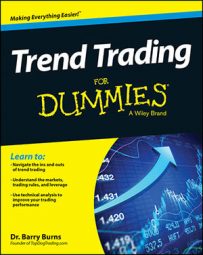Overnight risk refers to the risk of what happens to the markets while you’re sleeping or while the exchanges are closed and you’re not able to exit your positions. During this time, your money is exposed, and if you’re trading on margin, you’re exposed to a margin call.
Some markets, such as forex, trade around the clock, so the nature of their overnight risk is different. However, even forex closes for the weekend, at which time you’re exposed to dramatic market movements.
You may place a stop-loss order to help limit your risk. Placing such an order is as simple as executing any other order through the order execution software provided by your broker. Then if your position moves against you to a certain level you designate, your broker will close your position.
However, if the exchange is closed, it’s possible that the market can gap through your stop, and your position won’t be closed at the price you designated with your stop-loss order.
For example, if you buy a stock at $20 and put in a stop-loss order with your broker to sell at $18, your position would normally close at, or near, $18 when the stock reaches that price. You’d put this stop-loss order in if you wanted to risk on the trade to $2 per share.
But the next morning, you could find that due to some catastrophic event, the stock opens at $5! In such a case, your stop-loss order won’t be executed at $18, thus giving you a loss of $2 per share, but instead it will be filled at about $5 per share, so you’ll now have a loss of $15 per share!
And even then your order may or may not get filled depending on whether your stop-loss order was a limit order or a market order:
A stop-limit order is where you set the price range at the point you’re willing to execute the trade. For example, if you place a limit order to sell between $17.50 and $18 and the market gaps the next morning, you wouldn’t be taken out of your position because the stock had moved beyond your limit high or low range for the order.
You wouldn’t be selling the stock at a low price you may not want to accept (such as $5), but your loss — called an unrealized loss because you haven’t sold your stock and locked in your loss (because your stock position is still open and the price can still go up or down before you sell) — is still very real in the sense that it has reduced your overall wealth.
Unless designated as a stop-limit order, a regular stop order is a market order, in which your order will be filled after the market reaches the price you designate; however, you have no guarantees at what price your order will be filled. For example, the next morning, you’re taken out of your position around $5, thus locking in your $15 per share loss.

